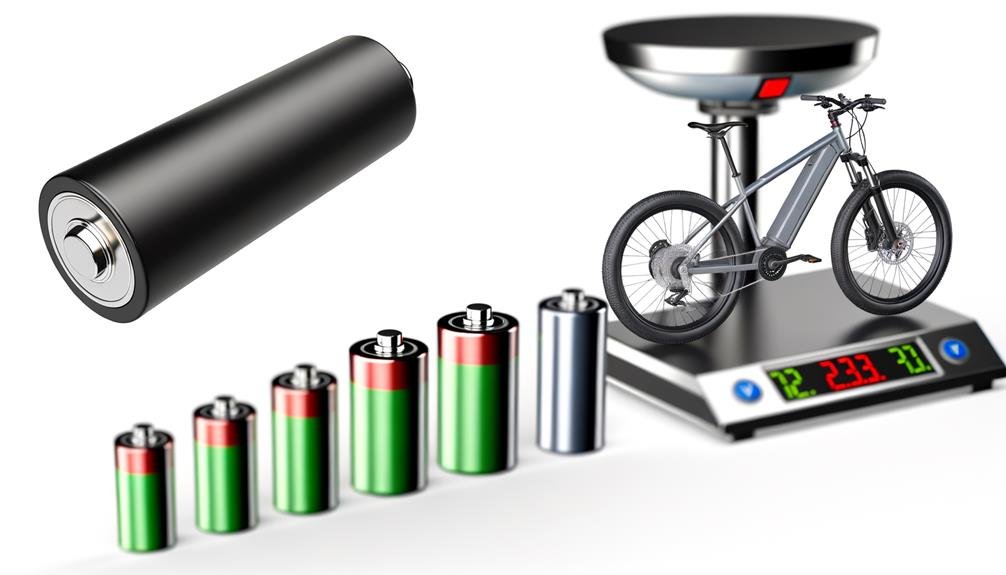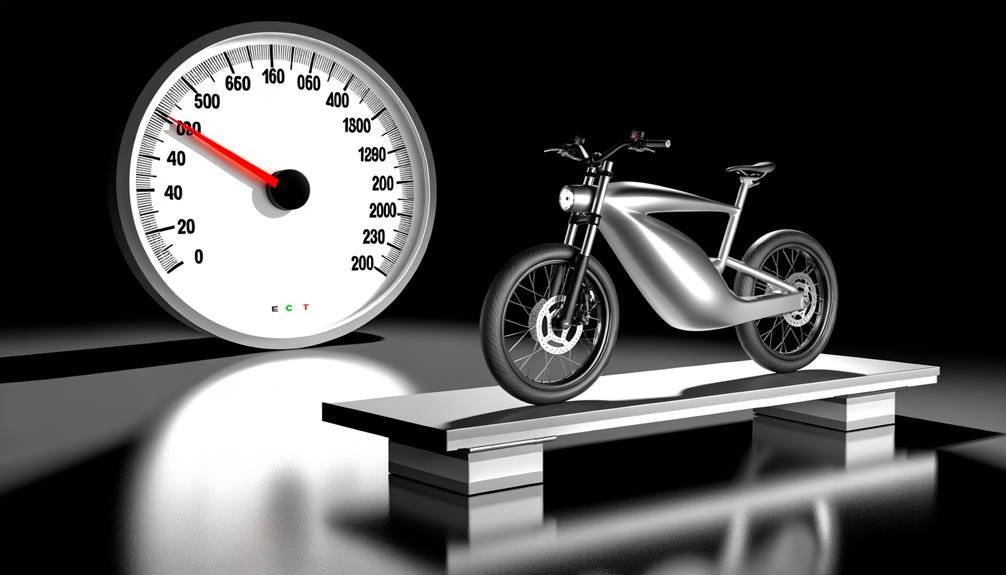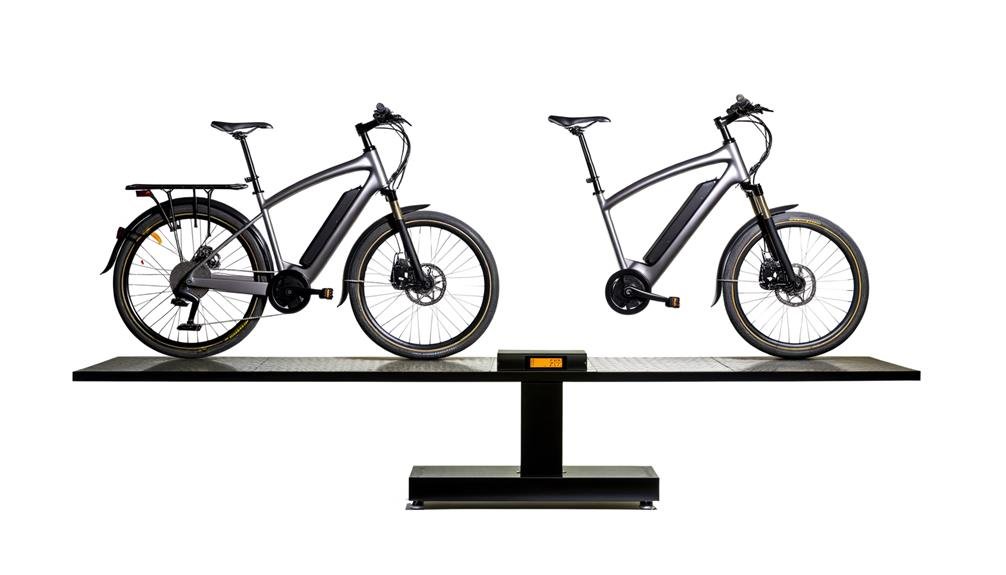Charles Miller is a veteran bike enthusiast with over 12 years of experience dealing with bikes as a mechanic. Despite immense love and expertise for...
The weight of an electric bike can significantly impact its performance, handling, and efficiency. It is imperative to understand that electric bikes, while similar to their traditional counterparts, carry additional components like a motor and battery, leading to an increased weight.
The average weight, ranging between 33 to 80 pounds, can be influenced by various factors, including but not limited to the frame material, motor size, and battery capacity.
As we explore these factors, we will uncover how the weight of an electric bike aligns with its intended use and how future technological advancements could potentially reduce the weight without compromising on performance.
Key Takeaways
- Electric bikes can weigh between 33 to 80 pounds, with components like motors and batteries contributing to the weight.
- Battery weight significantly affects the overall weight of an e-bike, with lithium-ion batteries weighing between 5-7 pounds and lead-acid batteries weighing 20-30 pounds.
- The weight of an e-bike can impact its performance, including maneuverability, handling, and uphill effort, but powerful components compensate for the weight without affecting speed.
- The frame material, such as aluminum, steel, or carbon fiber, can also influence the weight of an e-bike, with aluminum frames being lightweight and carbon fiber frames offering superior performance.
Average Electric Bike Weight
On average, electric bikes, with their additional components such as motors, batteries, and sensors, tend to weigh significantly more than regular bicycles, ranging between 33 to 80 pounds. This broad range in e-bike weight primarily results from the variance in components' weight. The motor and battery, the heart of any e-bike, alone can add an additional 10 to 20 pounds to the average electric bike weight.
While the weight of an e-bike may not significantly impact its speed, it can affect the effort required for pedaling, especially when navigating uphill terrains. It's important to note that e-bikes' weight, though seemingly a disadvantage, is a testament to the powerful technology they encompass. The desire for belonging in the e-bike community often necessitates understanding these technical aspects, including the weight implications.
When considering how much does an e-bike weigh, remember that technological advancements are continually leading to lighter options with equally powerful motors. This is a key consideration when choosing between lighter or heavier Electric Bikes Weight. Therefore, understanding the average electric bike weight is crucial for appreciating e-bikes' robust structure and their continually evolving technology.
Factors Influencing E-Bike Weight
The weight of an electric bike is primarily influenced by several critical components such as the motor, battery, controller, and structural elements like the frame, wheels, and handlebars. A heavier motor and battery, necessary for improved power and range, significantly contribute to the overall weight. E-bike frames, typically made of steel, aluminum, or carbon fiber, also impact the weight, with carbon fiber being the lightest yet strongest material.
Wider wheels, favored for stability and comfort, add to the weight. Furthermore, a cargo e-bike designed to carry heavy loads will inherently be heavier due to its reinforced frame and additional components. It's crucial to understand these factors influencing e-bike weight when considering a purchase.
| Component | Weight Influence |
|---|---|
| Motor and Battery | High |
| Frame (Steel/Aluminum/Carbon Fiber) | Medium |
| Wider Wheels | Medium |
| Cargo E-bike Additions | High |
Understanding Battery Weight

In examining the overall weight of electric bikes, one cannot overlook the significance of the battery's contribution.
The weight of batteries varies based on type and capacity, often ranging between 10 and 20 pounds.
This weight not only contributes to the e-bike's total mass but also influences its performance, particularly in terms of maneuverability and handling.
Battery Types and Weights
While assessing the weight of electric bikes, it is crucial to understand that the type and capacity of the battery significantly contribute to the overall heft, thereby influencing performance and handling.
The most common battery types and weights in electric bicycles include Lithium-ion and Lithium Polymer batteries.
A Lithium-ion battery typically weighs between 5-7 pounds, providing a well-balanced capacity-to-weight ratio for the e-bike.
On the other hand, a Lithium Polymer battery weighs slightly less, about 4-6 pounds, with comparable capacity.
A heavier option is the Lead-Acid battery, weighing 20-30 pounds, but it is less prevalent due to its lower energy density.
Therefore, when selecting a battery for an electric bike, one must consider the balance between its weight, capacity, and the intended use of the e-bike.
Impact on Bike Performance
Grasping the impact of battery weight on electric bike performance necessitates understanding that this substantial component, often weighing between 10 to 20 pounds depending on capacity, influences various aspects of the bike's operation and handling.
- Most electric bikes weigh around 60 pounds, inclusive of the battery and other components of an electric bike, providing stability even at higher speeds.
- The weight distributed by the battery and electric motors affects the bike's balance and ride comfort.
- Additional weight can impact the rider's effort, particularly uphill; however, the electric motor can mitigate this.
- These powerful components compensate for extra weight, enhancing bike performance without significantly affecting speed.
- The overall performance is a balance between the weight, power, and design of the bike, each playing a crucial role in the rider's experience.
E-Bike Frame and Its Weight
The frame of an electric bike, a critical component in its overall weight, is typically constructed from materials like aluminum, steel, or carbon fiber, each with unique weight and performance characteristics. Aluminum is a popular choice due to its lightweight nature, which contributes to a lighter E-bike. It's important to note, however, that the motor also plays a significant role in how much an E-bike weighs.
Steel, while heavier than aluminum, provides a sturdy and durable frame. E-bikes with steel frames may provide a solid feel for the weight, offering a sense of stability while riding. Carbon fiber, although more expensive, is much lighter and offers superior performance due to its strength-to-weight ratio.
In essence, the choice of frame material greatly influences the overall weight of E-bikes. While aluminum and carbon fiber result in lighter E-bikes, steel frames provide durability and a solid feel. Regardless of the material, the inclusion of a motor invariably adds to the E-bike's weight. Therefore, users must strike a balance between weight and performance based on their individual needs and preferences.
Weight's Impact on E-Bike Speed

The weight of an electric bike, while not markedly affecting its top speed, can influence the rider's pedaling effort and in turn, the bike's overall performance. This correlation between weight and performance is particularly noticeable during uphill rides or when increased acceleration is required.
Strategies for optimizing e-bike speed, therefore, must consider not only the effect of weight but also other contributing factors such as motor power, battery range, and rider comfort.
Influence of Weight Factors
Often underestimated, the weight of an electric bike, ranging from 33 to 80 pounds, plays a crucial role in determining not only the pedaling effort, particularly uphill, but also the overall handling and performance of the bike.
This 'How Much Does an Electric' bike weigh issue involves various factors:
- The average e-bike weighs around 52 to 55 pounds, with the motor and battery contributing significantly to this.
- E-bikes weigh more when the battery capacity and motor power are higher.
- The option to remove the battery can result in a lighter e-bike, enhancing mobility.
- The frame material can add or reduce pounds in weight.
- Additional components like fenders or racks can also increase weight.
Understanding these factors can help you find the right balance between weight, performance, and handling.
Performance and Weight Correlation
In examining the correlation between an electric bike's weight and its performance, it's noteworthy to understand that the overall weight, typically ranging from 33 to 80 pounds, doesn't significantly impact the e-bike's speed, particularly on flat terrain. This is because electric bicycles, or ebikes, are designed with motor power and pedal assistance to offset the bike's weight.
While a much heavier e-bike might be slightly slower uphill, the difference is negligible on flat surfaces. The weight, however, does influence handling and mobility, where a lighter bike is generally more maneuverable.
Hence, ebike design aims to balance weight and performance, focusing on motor power and pedal assistance to compensate for weight. As technology advances, we can expect more efficient designs that optimize this balance.
E-Bike Speed Optimization
Building on the understanding of weight and performance correlation, we proceed to examine how weight impacts an e-bike's speed optimization, an essential aspect of its overall performance.
There are several factors to consider when buying an ebike, as the weight of different e-bikes can influence e-bike speed optimization:
- The battery and motor largely impact an e-bike's weight; a heavier hub motor can slow down the bike, especially while pedaling uphill.
- Heavier e-bikes may offer enhanced performance due to wider wheels and stronger frames.
- Lighter e-bikes offer improved mobility and handling, but require more pedaling effort uphill.
- In an eBike Review, consider the weight contribution of LCD control panels and other design elements.
- Lastly, the controller's weight can also impact the overall performance and speed of the e-bike.
Comparing Light and Heavy E-Bikes

When comparing light and heavy electric bikes, it is crucial to consider various factors like the weight of the motor, battery, frame, wheels, and handlebars, as well as additional features such as wider wheels and stronger frame designs. A bike's weight influences not only its performance but also the rider's experience. This is why understanding the weight differences between e-bikes is essential before buying.
To illustrate, consider the following comparison:
| Bike Type | Weight | Handling |
|---|---|---|
| Light E-bike | 33-45 pounds | Implies better handling |
| Heavy E-bike | 52-80 pounds | May require more effort |
A lighter mountain bike or road bike typically implies better handling, especially when going uphill. However, a heavy e-bike may offer a more robust frame and larger wheels, enhancing stability and performance in certain terrains. Therefore, arranging a test ride is paramount to identify which weight suits your needs best.
Weight Classification by E-Bike Types
Diving into weight classifications, it's apparent that the type of electric bike significantly influences its weight, primarily due to variations in the components such as the controller, motor, battery, frame, wheels, and handlebars. If you plan to use your e-bike for commuting or leisurely rides, consider buying a lighter model, such as folding e-bikes. They are easier to handle and transport on a bike rack, but their lighter weight might mean compromising on battery and motor performance.
Different types of e-bikes, each with their unique weight characteristics, are:
- Mountain e-bikes: Known for their durable frames and robust components, they are heavier, typically weighing around 50-70 pounds.
- Folding e-bikes: Designed for portability, these bikes weigh around 30-50 pounds, ideal for carrying on public transport.
- Hybrid e-bikes: These offer a balance between weight and performance, weighing between 40-60 pounds.
- Fat tire e-bikes: These bikes, with their large tires, weigh more, usually between 50-80 pounds.
- Road e-bikes: Sleek and lightweight, these bikes weigh around 33-50 pounds.
Knowing the weight is essential before purchase, so it's best to consult with a specialist dealer to find the e-bike that suits your specific needs.
Frequently Asked Questions
Are Electric Bikes Heavy to Lift?
Electric bikes, with their weight considerations, can be heavy to lift, especially models with robust motors and batteries. Appropriate lifting techniques are advised. Lighter alternatives exist, though, enhancing e-bike portability without significant weight impacts.
Are Electric Bikes Too Heavy for Bike Rack?
While electric bikes can seem like a Herculean challenge for standard bike racks due to their weight, the key lies in considering rack durability, mounting challenges, weight limitations, bike rack designs, and safety concerns.
How Heavy Is an Electric Bike Without a Battery?
An electric bike, excluding battery weight, averages around 40-60 pounds, factoring in frame materials, motor size, and wheel dimensions. Light models using carbon fiber are less weighty, providing easier handling and maneuverability.
How Much Does the Pure Electric Bike Weight?
The Pure electric bike, crafted from lightweight yet durable materials, typically weighs 50 pounds. This ideal weight balances performance, with minimal impact on speed, and portability, addressing potential weight reduction and maneuverability issues for users.
Conclusion
In conclusion, the weight of an electric bike is contingent on multiple components such as the motor, battery, and frame. Averaging between 33 to 80 pounds, its weight can influence speed and performance. Lighter bikes are often favored for superior handling.
Understanding the intricacies of e-bike weight and its impact on functionality is crucial. As technology progresses, we may witness a revolution in e-bike design, achieving the once inconceivable—anachronistically juxtaposing lightness with power and capacity.

Charles Miller is a veteran bike enthusiast with over 12 years of experience dealing with bikes as a mechanic. Despite immense love and expertise for his Tacoma, he rides his Trek Ebike more. Anytime you meet him, you’ll either hear him talking about Bikes, or writing about all things bikes and cars on this blog.
More Posts


